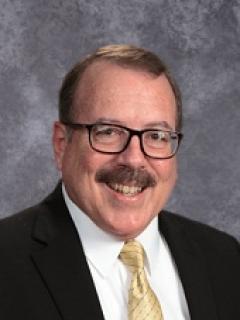No discussion of systemic racism would be complete without including the experiences of non-white people of color. We must also analyze how migration has changed the racial makeup of towns like Peoria while also reflecting on the close positionality of racist & xenophobic institutions and policies. Unless you trace your descent to Native Americans, African-Americans, or refugees, you are descended from immigrants and live in an immigrant nation.
A major factor in the growth and strength of the U.S. is its status as an immigrant nation; immigration in this country has always been a net-positive for society. In response of anti-immigrant rhetoric that attempts to stress the issue of illegal immigration, until quite recently it was significantly easier to immigrate to America and become a citizen compared to now with our current byzantine and overly draconian system. Despite these facts, throughout American history there has also been a strong trend of xenophobia grounded in a nativist & assimilationist ideology. It has waxed and waned depending on a multiplicity of factors: economic strength, race relations, foreign policy, etc. Currently, we are seeing a particularly virulent strain of xenophobia with the election of Donald Trump and the manufacturing of a mass deportation machine over the last 3 decades from both Democrat & Republican administrations.
Anti-immigrant hate has reached a fever pitch in the U.S. (and, throughout the Western world as we witness the regrowth of fascist ideologies). Trump began his campaign from the ivory pillar of his over-mortgaged hedonism-tower literally referring to the majority of immigrants crossing the Southern border as “rapists & murderers”, even going so far as to accuse Mexico of a conspiracy to send its criminals here to weaken us. His campaign promise of a physical wall on the Southern border of the U.S. has served to fetishize the desire for fascism, the desire to other a human until their humanity is so obscured as to be unrecognizable. This desire to Otherize–a desire to inflict pain–is the only way the fascists and reactionaries can logically deny that the overcrowded, under-resourced, and painfully inhumane living conditions at immigrant concentration camps are anything but the human rights crimes most realize them to be.
An estimated 8,792 people in Peoria are foreign born, mostly from Mexico and India. Nearly 1 in 7 Illinoisans are immigrants (foreign-born), and almost half of them are naturalized U.S. citizens who are eligible to vote. Roughly 886,000 Illinois residents has one relative who is undocumented living with them. About 799,000 (90%) of those mixed-status households also include a family member who is a U.S. citizen or has lawful immigration status. According to data from the Illinois Coalition for Immigrant and Refugee Rights (ICIRR), Metropolitan Peoria has roughly 5,792 documented immigrants and approximately 3,000 undocumented immigrants; about half of the undocumented population emigrated from Latin America (mainly Mexico), and the other half from Asia. “As of 2017, 8.26% of Peoria, IL residents (9.54k people) were born outside of the United States, which is lower than the national average of 13.7%.”1 The majority of documented immigrants in Peoria hail from Mexico, India, and Germany in that order.
. . .
In 2017, I and other like-minded citizen-allies formed the immigrant justice group Peoria No Ban No Wall. We immediately began reaching out to members of the Latinx, Muslim, and other immigration communities to see what were the needs of the community and how could we as allies best help them.

Thankfully, Peoria has not seen any deportations, to the best of our knowledge. Yet, the fear of deportation and anti-immigrant or Islamophobic violence continues to be present. Trump’s policies of frequently changing immigration policies, becoming more draconian in enforcement, and going after literally everyone–undocumented or not–has resulted in a heightened sense of uncertainty about people’s statuses. Even naturalized citizens, like local activist Jimena Lopez, have experienced anxiety because of the Trump administrations threats to begin denaturalization proceedings against people who are already citizens.
Peoria No Ban No Wall partnered with the legal-aid group The Immigration Project and hosted several Know Your Rights workshops in immigrant communities. The Immigration Project is the only non-profit immigrant legal aid group in all of downstate Illinois. We provided up-to-date information on the ever-changing policies of immigration law, provided resources, and educated people on their rights when interacting with law enforcement. We even had the privilege of providing a workshop for the Methodist Mid-West Hispanic Caucus hosted at First United Methodist Church in Peoria. This potentially had the ability to educate thousands of immigrants across the midwestern United States.
Another major concern was addressing some of the trauma immigrant children were facing because of the fear their parents may be deported. “David del Pozo teaches English as a Second Language at Glen Oak Primary School. He says many students in his classroom are confronting anxiety that makes learning difficult, if not impossible. ‘They are afraid that you know some day, somebody would come to school, and they could be deported, or something could happen to them,’ Del Pozo said. ‘They could be separated from their families…’”2 District 150 superintendent Dr. Kherat stated she was aware of some students not attending school because of fears of deportations or hate crimes. Peoria No Ban No Wall launched a successful lobbying campaign with the help of ICIRR to pass a Safe Haven policy at Peoria Public School’s District 150. After nearly six months of negotiating, the District 150 School Board unanimously passed a Safe Haven resolution. This limited the kinds of information shared between the school district and immigration enforcement, and essentially barred access to schools by Immigration & Customs Enforcement. During consideration of this issue, School Board member Dr. Davison-Aviles gave a personal reason this issue was so important to him:
“For some of us, this issue is a personal issue. I remember a story… of a single woman, from Mexico, and she had two children. And she was fleeing domestic violence; exactly the sort of person the current administration would seek to prevent from coming into the United States, because of course they’re not the right kind of citizen. However, this person persevered and actually did make it here – you’d be pleased to know; I’m sorry if I get a little emotional here… because, you see, if she hadn’t made it, I wouldn’t be here; nor would there be my brothers & sisters: attorneys, vice-presidents, and a pretty damn good auto mechanic. None of us would be here. That’s all I have to say.”

You can read the full policy written by myself and attorneys at ICIRR that was adopted by Peoria Public Schools here. “’District 150 showed real leadership, in an otherwise leaderless state,’ Zach Gittrich of Peoria No Ban No Wall said after board members unanimously approved a Safe Haven resolution. ‘They set a standard for the city, the county and the state.’”3
Peoria No Ban No Wall also built a relationship with Peoria Federation of Teachers Local 780. We provided them training and info on handling immigration issues in the classroom. Furthermore, we co-organized an event for May Day 2017 with the local teachers union entitled “Build Schools, Not Walls.” We had over hundred union members and immigrants there and uplifted the voices of immigrant students facing discrimination.
. . .
Unfortunately, not all of our strategies for immigration justice were successful, and it shown a spotlight on the reactionary politics that plague Peoria. Working with ICIRR, The Immigration Project, Illinois Peoples Action (IPA), Pastor Adrian Garcia of First United Methodist Church, and others, Peoria No Ban No Wall began the arduous process of lobbying Peoria City Council to pass a Welcoming Ordinance4 protecting Peoria’s immigrant residents in the Spring of 2017. Despite initial support from At-Large council person Beth Jensen and 2nd District Councilperson Chuck Grayeb, we quickly realized it would be an uphill battle. Unlike the District 150 school board, most of the council had no interest in addressing this issue, especially with spurious statements by President Trump about sanctioning “Sanctuary Cities.” One of the poverties of thought in Peoria is the ability to envision goals proactively; instead, Peoria is typically reactive and much to its detriment.
For a City Council that is constantly complaining about the population loss of Peoria (and Illinois in general) and its effect of a dwindling tax base, city council members considered the possibility of welcoming new migrants with supportive policies as anathema to its goals. Peoria has lost over 10,500 residents since 2010, more than any other downstate Illinois city, and it ranks 350th of 383 cities in the nation ranked by population growth.5 It ranks 5th in the nation for population loss of metropolitan areas. Of the population loss, 43% is domestic migration, i.e., people packing up and moving out to a different region in the U.S.6 The one group that added to Peoria’s population: international migration. From 2016-2017, the immigrant population of Peoria increased from 7.76% of the population to 8.26%.7 It’s almost common sense that making policies that protect immigrants would increase the amount of immigrants who want to live there.
But, the reactionary myopia of Peoria City Council is blind to these facts. Beth Akeson thought Welcoming policies would lead to higher crime. Alleged servant-leader Zach Oyler couldn’t comprehend why the city should even care: “I think this is a state or national concern.” Canadian immigrant Denis Cyr (who received an Einstein visa8 for his hockey prowess) couldn’t fathom the idea that poorer, less privileged immigrants might do whatever it takes to provide for their families. According to Latinx activist Cesar Vargas, conservative Jim Montelongo had no problem showing off his immigrant heritage when it came to getting elected but was no where to be found in the Latinx community after the polls closed. Mayor Ardis privately told immigration activists he personally had no problem with undocumented immigrants even saying we should let them all stay, but politically he was too cowardly to support the issue.
Studies demonstrate that crime is significantly lower in sanctuary jurisdictions. On average, there are 35.5 fewer crimes per 10,000 people in sanctuary counties. Economies are also stronger in sanctuary jurisdictions. Median household income, on average, is $4,352 higher in sanctuary jurisdictions. The percentage of people who live at or below the federal poverty line is, on average, 2.3 percent lower in sanctuary counties. Moreover, white poverty is, on average, 1.4 percent lower in sanctuary counties, and Latino poverty is, on average, 2.9 percent lower in sanctuary counties. Studies also show a 2.6% drop in households that receive SNAP benefits. Labor force participation is 2.5% higher in sanctuary counties and unemployment is 1.1% lower.9
As time progressed, other organizations like the ACLU of Peoria and Change Peoria got involved, and a loose coalition was formed for the purpose of turning Peoria into a Welcoming City. The ACLU of Peoria, under the direction of president Jeff Johnson, attempted to get a version of the Welcoming Ordinance approved by the Advisory Committee on Police-Community Relations with the help of then-Vice-President of the committee, Reverend Gianni Fogliano. Fogliano claimed that the Advisory Committee could pass legislation or recommendations that would then be placed directly onto City Council’s agenda for consideration (this turned out to be false, as the Committee has no such power10). The logic was, since the Ordinance largely focused on police interactions with immigrants, this committee’s recommendation would provide ample weight in convincing the already recalcitrant City Council.11

While there was certainly some support among the unelected members of the committee, there was also opposition. The fiercest opposition came from NAACP board member12 Don Jackson. He was initially confused as to why the ordinance was even being considered by this committee. Jackson even went so far as advocating for the police to racially profile Latinx residents and ask them to prove their documentation status. For a civil rights attorney who led the local NAACP for 21 years, his comments on the Advisory Committee sounded less like Dr. King and more like Sheriff Joe Arpiao.

At a NAACP of Peoria meeting I attended, Mr. Jackson recounted how he had visited a construction site to verify they were meeting minority employment quotas. When Jackson asked the foreman about this, the foreman pointed to a Latinx man and said, “There’s your minority.” Visibly disappointed, Jackson told the meeting he didn’t check to see if the Latinx individual was “illegal or not.” (Apparently, Mr. Jackson is unaware that many Latinx people are actually citizens.)
Current At-Large Councilmember Dr. Rita Ali served on the committee as its president during this time.13 Initially supportive of the measure, Dr. Ali eventually seemed flabbergasted by the complexity of the ordinance. Many different activists offered to personally review the ordinance with her, even presenting a willingness to bring expert immigration attorneys in to explain the finer details. When the committee finally voted on whether to recommend the ordinance or not,14 it was voted down in a tie-vote. Dr. Ali abstained from voting meaning it could have passed had she voted for it. Later, during her 2019 campaign for City Council, she said she couldn’t support the bill because of certain particulars in the ordinance (though she never did reveal what these particulars were).

The NAACP of Peoria never made a public decision on whether to support the Welcoming Ordinance, despite the National NAACP supporting Welcoming
policies.15 At the same time, neither of the African-Americans on City Council (District 1’s Denise Moore and then-At-Large member Eric Turner) expressed any support either. There seems to be this belief among the more conservative members of the Black Establishment that immigrants, especially low-skilled Latinx workers, negatively impacts the employment opportunities of Black Americans. It’s a rather protectionist stance to civil rights. “Positioning one group of low-wage workers against another group of low-wage workers is an insidiously effective method of fomenting resentment and tensions among workers of different racial and ethnic backgrounds, which only buttresses the status quo.”16
The hypothesis that an increase in immigrant labor depresses wages and opportunities for African-Americans is belied by the fact that population growth stimulates economies precisely because an increase in consumers generates a stronger economy:
A 2016 study conducted by scholars at Penn’s Wharton School of Business found that the increase in the labor supply resulting from immigration could actually generate more employment in industries such as home construction and food production. More people means more consumption, and, specifically, more consumption by the working poor. Existing data simply doesn’t support any definitive correlation between the stark unemployment rate of African Americans and the employment of recent immigrants. Nevertheless, those striving to push through xenophobic, racist, Islamophobic, and inhumane immigration restrictions find unusual allies among some African Americans seeking to lower the black unemployment rate.”17
Furthermore, this myth undermines the achievements and opportunities for solidarity of the many immigrants hailing from the Caribbean and Africa, over 200 of which live in the Peoria area.
This is not to say the NAACP of Peoria supports Trump’s immigration policies; they’ve spoken and been present at local rallies against child separation and inhumane immigration policies. Nor is it suggesting the entire black community shares this skepticism for increased immigration. The black community is not monolithic (no community is). The Black Justice Project in Peoria (a group of younger, more progressive black activists) has expressed support for Welcoming Policies. This is merely an attempt to analyze the problematic nature of this particular myth.
PPD currently has a policy against collaborating with ICE, but its merely a department policy not a statute enforced by law. This policy could easily change with new leadership or if different circumstances arise. While At-Large candidate Andre Allen said publicly during his campaign that he remained on the fence about Welcoming Policies, Allen made the excellent point that in his career as a college administrator at Methodist College he found that concrete written policies are better than ad-hoc or informal policies. “I’ve been bitten by not having policies that are clear and enforceable,” Allen said.
Yet, the myopic poverty of City Council is unconcerned about this. Beth Jensen even had a change of heart about her support, trotting out right-wing propaganda about the risk of “Sanctuary Cities” loosing Federal funding.18
Jensen was even given the opportunity to share immigrant testimonials from Peoria immigrants who supported the Welcoming Ordinance. She could have used her privilege & power to uplift these oppressed voices, but she chose against this, saying these testimonials did not show people under imminent threat of deportation. Talk about reactive and regressive thinking. The whole point of the Welcoming Ordinance was to be proactive in case the Federal government began immigration actions in Peoria. (For more on Beth Jenson’s flip-flopping, see my article).
While Peoria did pass a resolution declaring itself a Welcoming City in May of 2017, resolutions are merely statements with no force of law. As At-Large City Council candidate Peter Kobak said, “We [City of Peoria] passed a resolution, but it doesn’t really protect anyone. We don’t have an institution to protect those immigrants.” Nor are activists confident that any of the members of City Council would take appropriate action action should concerns arise. Ultimately, it was clear to some activists that the resolution was a tactical maneuver by City Hall to undermine the movement for a Welcoming Ordinance by declaring they’d solved the problem without ever creating any real policy.
. . .
In Illinois in general, there have been other struggles for the immigrant community. In February of 2019, immigrant justice activists became aware of a lobbying effort by a private prison corporation, Immigration Centers of America, to build a privately-run immigrant detention center in Dwight, IL. The overwhelming majority of privately-operated prisons are immigrant detention centers. This was of great concern to immigrant justice activists from across the state. An immigrant prison so close to other Illinois communities could possibly increase the ICE traffic in our own communities. Activists from across the state–and some from beyond–descended on Dwight, IL several times protesting against the construction of an immigrant detention center. Groups included: #NoICEDwight, Peoria No Ban No Wall, the Immigration Project, IPA, ICIRR, Connect Kankakee, Peoria and Blono Democratic Socialist of America, Deportation Watch Network, Catholic Legal Immigration Network, and many more. We held several rallies and marched through the streets of Dwight, IL with several hundred activists.
Unfortunately, the Dwight Board of Trustees approved the construction of the immigration detention center by a vote of 5-2. Disappointed but not defeated #NoICEDwight activists quickly took their fight to the State Capital in Springfield. Groups successfully lobbied the Illinois legislature to pass HB 2040, a bill aimed at banning privately-operated immigrant prisons from operating within Illinois. Governor Pritzker signed the bill into law on June 21st, 2019. This was a huge victory for immigrants across Illinois and beyond. But, the struggle isn’t over. HB 2040 didn’t outlaw local jails contracting with federal government to imprison immigrants. Pulaski County, McHenry County, and Kankakee County all house immigrants in their jails and profit off of the misery of our draconian immigration system. (You can read more about the situation in Dwight, IL here.)
. . .
Immigrant residents in Peoria have also experienced acts of discrimination and fear based on the documentation status of themselves or family members. Dr. Auria Toxqui is an assistant professor of History at Bradley University. She was born in Mexico City. She is currently a legal permanent residence who has lived in the Peoria area for the past ten years. Dr. Toxqui has had mainly positive experiences and loves her community in Peoria.
However, since the rise of Trump, she’s experienced more discriminatory behavior from private citizens. Once she was in a local grocery store with her 1-year-old daughter. She was talking with her daughter, like all parents do, while she was shopping. Because Dr. Toxqui is bi-lingual, she is raising her daughter to be bi-lingual and frequently speaks to her in Spanish. Someone randomly launched an inquisition asking if Dr. Toxqui taught her daughter English. This is not the first time this has happened to the professor, and despite being dismayed, she responded “there was no official language prescribed in the U.S. constitution” followed by a bevy of statistics showing Latinx children are more likely to be multi-lingual than white children.
But, it wasn’t until she faced a particularly glaring experience that she began to notice Peoria shifting from being “a friendly to a non-friendly city.” On the 4th of July 2017, Dr. Toxqui and her family were enjoying a baseball game at Dozer Park. While she sat with her 2-year-old daughter watching the game, a rude woman yelled “Mexican, Mexican!” while giving the professor and her daughter a middle finger. It took her several days to realize this incident was a racist attack against her.
. . .
There is still much struggle to be done to help the immigrant community in Peoria. There are thriving Latinx, Hindu, and Muslim communities growing in Peoria despite the Great Recession and thirty years of a draconian immigration policy.
In Part 4, we will look at attempts to reduce racial inequity by both government and private interests in the Peoria Area. What has been accomplished? What still needs to be done?
This article was originally published on Strangecornersofthought.com.
- “Peoria, IL.” Data USA, 2019.
- Herrington, Cass. “Peoria Public Schools Considers ‘Safe Haven’ Policy to Protect Immigrant Students.” WCBU, Peoria Public Radio, 25 Sept. 2017.
- Adams, Pam. “PPS Approves Safe Haven Resolution and Revised Budget.” Journal Star, Journal Star, 26 Sept. 2017.
- A Welcoming Ordinance would: Bar city officials from contacting, collaborating or assisting with Immigration Customs Enforcement (ICE) solely because of a person’s immigration status; draw a firm dividing line between police and ICE, disentangling the criminal and immigration system; prevents the police from threatening or coercing someone based on their documentation status or nation of origin; bar access to City databases, facilities, and other resources for purposes of implementing registries based on race, gender, sexual orientation, religion, immigration status, national or ethnic origin, or to conduct civil immigration enforcement; grant equal protections for immigrants who are survivors of crimes; set the standard for surrounding areas aspiring to stand with immigrant communities.
- US Census Bureau see: https://www.illinoispolicy.org/all-illinois-metro-areas-saw-population-shrink-in-2018/
- Ibid.
- See DataUSA: https://datausa.io/profile/geo/peoria-il/#demographics
- The same type of visa Melania Trump received.
- Wong, Tom K. “The Effects of Sanctuary Policies on Crime and the Economy.” Center for American Progress, Center for American Progress, 26 Jan. 2017, 1:00 AM.
- Whether Reverend Fogliano was merely ignorant of the committee’s powers or willfully lied about them is still a mystery.
- Peoria No Ban No Wall did not support this strategy. We were skeptical of how much weight a recommendation from the committee would actually hold and believed energy should be directly applied to elected officials on City Council as opposed to an unelected board with little power.
- The NAACP automatically gets to choose a member to sit on the Police Advisory Committee.
- She is still a member but is the City Council’s representative.
- This was after a grueling six months. The Advisory Committee meets monthly, but half the time they didn’t even bother showing up.
- “NAACP Statement on Executive Orders Targeting Muslims, Legal Immigrants.” NAACP, 30 Jan. 2017.
- Lindsey, Treva B. “Trump Wants to Pit Black Americans against Latino Immigrants. Don’t Fall for It.” Vox, Vox, 21 Feb. 2018.
- Ibid.
- see Somin, Ilya. “Why Trump’s Executive Order on Sanctuary Cities Is Unconstitutional.” The Washington Post, WP Company, 26 Jan. 2017.
























